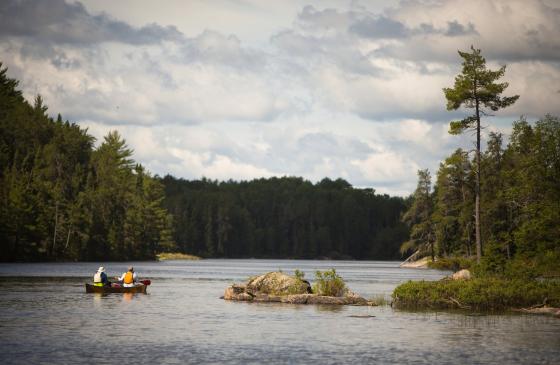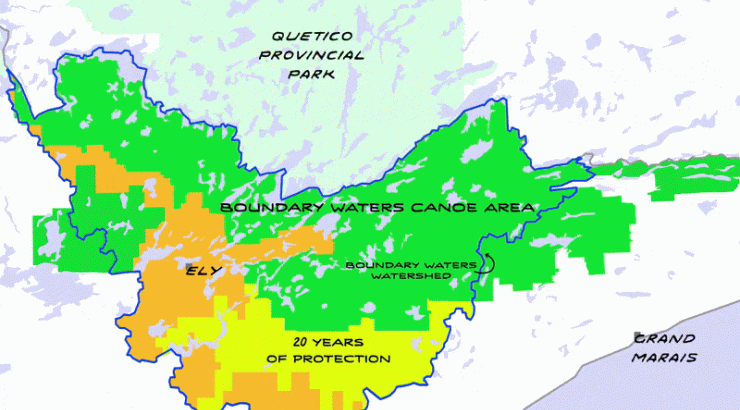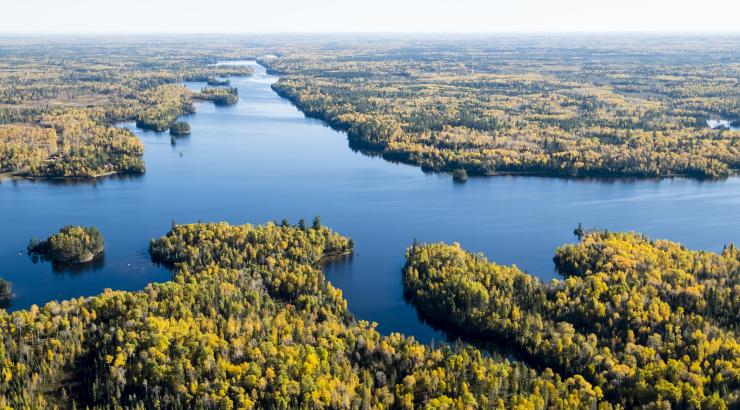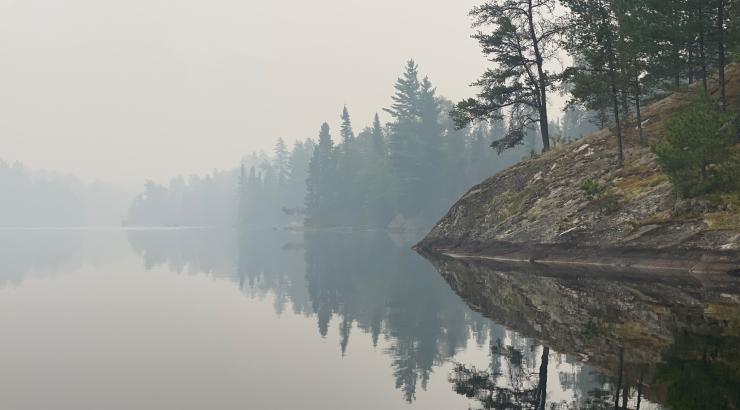Earlier this month, The New York Times published this opinion piece by Richard Moe. We think it’s worth your time to read and share it with your friends.
Minnesota prides itself on being “the Land of 10,000 Lakes.” At least 1,100 lie in the far northeastern part of the state, along the border with Canada, where more than a million acres of pristine waters and unspoiled woodlands are interspersed with canyons, steep cliffs and huge rock formations shaped by glaciers during the last ice age.
Today this region, the Boundary Waters Canoe Area Wilderness, looks almost exactly as it appeared 10,000 years ago when Paleo-Indians lived there. Sigurd Olson, the naturalist and writer who guided there for three decades, called it “the most beautiful lake country on the continent.” Few who see it would disagree. Today it is the most visited wilderness area in the United States.
But now this special place is at great risk.
Late last year the Interior Department concluded that the two expired leases held by a Chilean-owned company, Twin Metals Minnesota, should be reinstated for copper and nickel mining near the border of the Boundary Waters. This reversed a decision made at the end of the Obama administration, which rejected the leases after the Forest Service concluded that a mine there “posed an inherent potential risk” that threatened “serious and irreplaceable harm” to the wilderness.
Then, in January, the Trump administration scaled back a review of the impact of prohibiting mining on thousands of acres of Forest Service land near the wilderness. That was followed, this month, by the Interior Department reinstating those two expired Twin Metals leases. Now, the Trump administration says those leases must be renewed once terms and conditions are worked out.
These actions are another chapter in President Trump’s continuing assault on the nation’s most precious natural and cultural lands. They are of a piece with the shrinking of Bears Ears National Monument in Utah by 85 percent to carve out areas believed to contain oil and gas reserves and large uranium deposits. By giving the extractive industries virtually everything they want in Utah, Alaska, Minnesota and elsewhere, this administration has sent an unambiguous message: There is no place on our public lands — or waters — that is inviolable if there are resources to be exploited.
This is not the first threat to the Boundary Waters. In the early 1960s, there were battles over logging, timber roads and the use of motorboats and snowmobiles. Though the area was included in the 1964 Wilderness Act, some logging and motor use were allowed to continue. Finally in 1978 Congress passed the Boundary Waters Canoe Area Wilderness Act, which expanded its size, restricted motorboat use, ended logging and banned mining in the wilderness and some adjacent lands.
Many thought the area had been protected permanently, but 40 years later the fight continues. Twin Metals says large deposits of sulfide-based ores like copper and nickel have been found near the wilderness and wants to extract them. The danger is that mining these sulfide ores can result in contaminated water seeping and flowing into lakes, rivers, streams and wetlands and groundwater. Because of the interconnected waterways in the wilderness area, much of the area’s watershed could become polluted. Once that happens, there is no fixing it.
Twin Metals argues that the risk for pollution from the sites will be minimal. But the idea that pollution can be prevented by mitigation measures has proved wrong time and again at other mines. Studies undertaken for opponents of mining have concluded that the highly toxic waste from a single mine in the wilderness area’s watershed could continuously pollute the Boundary Waters for hundreds of years.
Even so, the Trump administration appears to be eager to help Twin Metals. In addition to agreeing to renew the leases, it has moved to reduce environmental scrutiny of any other future mining activity near the Boundary Waters. In the waning days of the Obama administration, the Interior Department authorized an environmental impact study on whether to ban mining for 20 years on 234,000 acres of Forest Service land near the wilderness, including the Twin Metals locations.
This year, the Trump administration sharply scaled back the comprehensiveness of that review. At the very least, the Interior Department should have waited for the results of this study, however less rigorous, before moving forward with leasing. What’s the rush? Any decision should be based on facts, and the value of what is at stake.
The Forest Service considers the Boundary Waters to be one of its premier wilderness areas, priceless but vulnerable because of the very qualities that make it unique — the vast interwoven system of lakes, rivers, and wetlands holding pure, clean water. Give the Forest Service a chance to make a case for a 20-year mining ban. Then it will be up to Interior Secretary Ryan Zinke on what do with those 234,000 acres.
Walter Mondale, the former vice president and a native of Minnesota, worked throughout his career to protect Boundary Waters. He says the Interior Department’s decision to renew the mining company’s leases runs counter to the long bipartisan Minnesota tradition of preserving its most important places, and that the proposed mine “could cost us the soul” of the wilderness. He told me he first visited it in his mid-20s, and over the decades returned frequently.
Countless others have found visiting the Boundary Waters a transformative experience. In a manic world, it remains a glorious landscape where you can go days without seeing another human. It’s essential that this special wilderness remain unspoiled. As Sigurd Olson put it: “Wilderness to the people of America is a spiritual necessity, an antidote to the high pressure of modern life, a means of regaining serenity and equilibrium.”
About the author: Richard Moe is a former president of the National Trust for Historic Preservation and is on the board of the Conservation Lands Foundation. He served from 1977 to 1981, as chief of staff to Vice President Walter Mondale
Read the article on the New York Times website at https://www.nytimes.com/2018/05/17/opinion/trump-mining-boundary-waters-wilderness.html



